Preprints & Reprints
Back to Preprints & Reprints > Publications & Opinion > Homepage
The Information Wave
Peter Cochrane
Prologue
Our ability to generate information and transport it about the planet on super highways of optical fibre is about to change the way in which we communicate, work and live. There is not a single aspect of our future that will go untouched by the communication and computing revolution that is now upon us. The change we are about to witness will overshadow the impact of the printed word, industrial revolution, and physical transport. How will we view this future, and increasingly virtual, world? Perhaps we will consider that:-
Home is where the heart is
Business is where the brain is
Office is where the user is
Value is where the information is
The next major wave of IT development will focus on the delivery of information and experience on demand, in the right form, at the right time, at the right price to fixed or mobile terminals anywhere, over networks of optical fibre, radio, satellite, and optical wireless. Bandwidth, distance and time will no longer be significant cost elements as service and access become the dominant features of the changing demands of an information focused society.
The Human Condition
From about the year 1600 onwards the human race has been consuming raw materials at a compound rate ~7% per annum [1]. If the vast majority of these resources were not renewable, then at this rate of growth the whole of planet earth would be consumed within the next 450 years, there would be no planets in the solar system left within 550 years and the sun itself would be consumed in only 650 years. This simplistic extrapolation of growing consumption, which will increase as the third world industrialises, serves to illustrate that the prognosis of the Club of Rome in 1972 is ever more certain [2]. Exponential growth by humanity based on accelerating raw material consumption is clearly impossible - there are 'Limits to Growth'. Within 100 years we can expect to see severe global difficulties due to the continued burning of hydrocarbons resulting in increased pollution levels and the denuding of raw material stocks [3].
Whilst there is an abundance of technology to address the fundamental problems associated with an increased expectation of improved life style, it is certainly not the case that everyone on the planet can enjoy the energy consumption standards of the USA. The average American currently consumes an average of 8kW for heating, air conditioning, physical transport, lighting and other services [4]. If mankind is to live and prosper whilst maintaining the planet in a habitable state, then a much lower level of consumption is necessary. As the sun's energy falling on earth amounts to 1kW/m]2, and given the available area for solar collectors, and their electrical conversion efficiency, we might assume a reasonable target to be 1kW per human [5].
Physical travel constitutes a primary destructive, and perhaps largely unnecessary, activity with almost 100Bn passenger miles (costing over ?15Bn) consumed in the UK alone just to get to work [6]. Much of this could be avoided today, and should be negated by information technology before the turn of the century. Not only is travel expensive in raw materials and energy, it also consumes vast amounts of time, with over [[sterling]]15Bn per year in traffic jams for the UK - and [[sterling]]10Bn of this in London alone! Similarly we might anticipate large gains in medicine, health care (?35Bn), care, education (?25Bn), training (?35Bn), and entertainment (?31Bn) in the UK [7]. The cost equation for each of these sectors is largely dependent on people, material, energy and transport. The application of new technologies is long overdue with the potential for substantial savings in raw materials, energy, time and productivity.
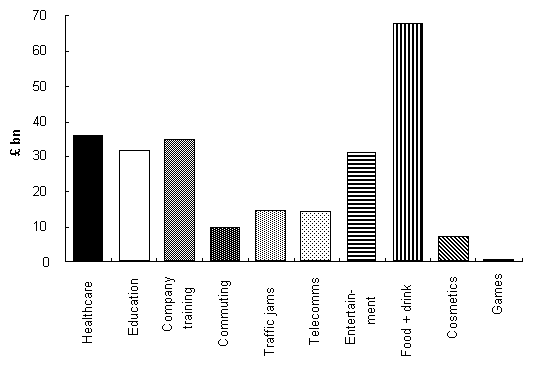
Figure 1: Total UK costs in specific service/product categories.
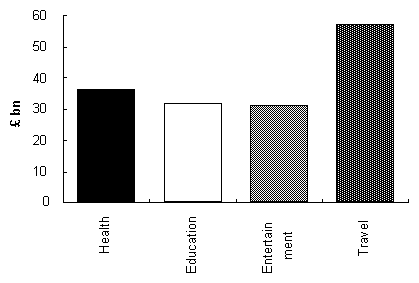
Figure 2: Total UK (Government and consumer) expenditure on health, education, entertainment and travel
Where is the Money
Broadly speaking, the money devoted to the development a future information based society can only grow substantially at the expense of established industries and modes of operation. Looking at the distribution of wealth available in the UK for example, we see four major target areas depicted in Figs 1 & 2 that lie outside the established IT industry. Health, education, entertainment and physical travel represent key opportunity segments, which are in turn, augmented by publishing, shopping, surface mail, and other peripheral activities.
From the history of earlier industries, it is clear we can expect dramatic reductions in human involvement in manufacturing and services, with subsequent cost savings. This change will be predicated by new generations of robots, materials and manufacturing processes, releasing human and financial resource for a new wave of society. Interestingly, the financing of the Information Wave looks to be relatively minimal when compared to all previous waves of change since the printing press. In the information wave everyone should have access to the technology, and should be able to participate. All the key technology elements to make this happen are to hand, and even the market drivers are engaged and established in this direction.
The Magic of IT
Information Technology (IT) is the only sector delivering an exponential growth in capability whilst reducing raw material and energy costs. Since 1960 our ability to transport information over any distance has doubled each year whilst the use of raw materials and cost has reduced - Figs 3 & 4. Today, optical fibre transports over 90% of the UK telephone, fax and data communication. This new medium has an inherent capacity to transport the entire contents of over 1000 human minds on just 10 fibres at a rate faster than the fastest express train [8]. Similarly the packing density of electronic circuits, information storage and processing power has nearly doubled every year with power consumption, raw material and cost falling exponentially [9]. We now enjoy a computing and communicating capability that was unimaginable in the 1960's. In ten years we might expect to see computers 103x more powerful than those of today. Within twenty years [10] the power could increase by 106x, and there is a distinct possibility that in thirty years time the power will have increased to 109x. Machines of such power and capability will evolve human characteristics of adaptability, intelligence and personality. They will also see computing and communications infrastructures accessible by the entire populations. IT will no longer be the preserve of an elite who have the opportunity, access and skill sets that are necessary to drive today's user unfriendly devices. Talking to the machine, having hands in the screen and being able to see people and information in electronically generated environments will become the norm.
Cost Reduction - Capability Growth
In 1956 the cost of a transatlantic telephone call (Fig 4) was [[sterling]]2.80/minute - today it is [[sterling]]0.5/minute - computers in the home were unthinkable and the storage and transport of information was almost wholly conducted by paper. Today, we have a rapidly expanding global network of optical fibre already transporting 65% of all the telephone calls world-wide [11,12]. The first pocket calculator on the market in the early 1970's cost over [[sterling]]80 for just four functions - today superior technology is given away with petrol! A low cost electronic wristwatch now has more processing power than a mid-range computer of the 1960's, whilst the personal computer is realising a processing, storage and display ability for the office and home that completely surpasses the mainframe computers of only 10 years ago. This is all characterised by an exponential growth in ability, and a correspondent fall in cost - exponentially more for exponentially less!
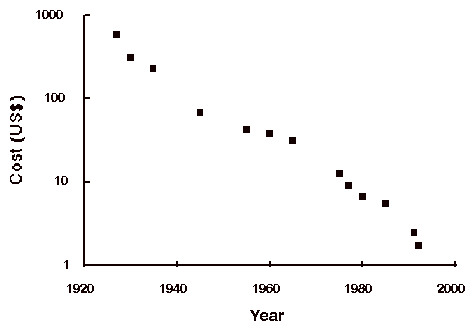
Figure 3: History and principal trends in cable telecommunications.
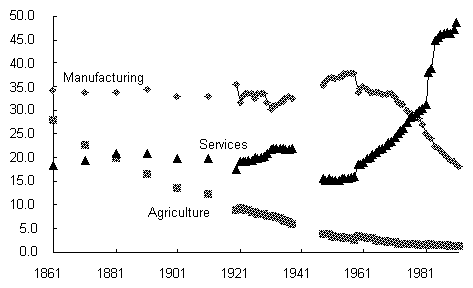
Figure 4: The Falling Cost of a transatlantic phone-call
The scale of change is perhaps best exemplified by the reduction in raw material usage. In the UK there is now an installed base of over 3M km of optical fibre supporting the communication needs of a 57M population. The entire fibre infrastructure was manufactured with just 90 tonnes of sand (silica) compared to the thousands of tonnes of copper cable it replaced! Similarly, the latest desk top computers are being designed to use materials that are over 95% recycled. In both cases the performance and capability are vastly superior, power consumption increasingly minuscule, and production cost far less than previous technologies. Instead of using Watts of power for a telephone call we now use mW.
No Frontiers - No Barriers
The digital revolution in computing and communication has, so far, mainly impacted the office and place of work. Before the year 2000 it will have entered the home in the form of integrated entertainment and information systems. Information will become a commodity item, accessible across the planet at insignificant cost. This will be made possible by continued advances in chip, satellite, radio and optical fibre technology that will also reach out to the home, car, and/or computer you wear. This information world will see the barriers between work play, home and office breached [13]. The nature of commerce and society will change radically with no effective national and international boundaries. This could pose significant political problems with governments and regulators seeing control slip through their fingers - a bit, is a bit, is a bit - there is no difference between a telephone call, CATV, broadcast or data! Regulating the flow, distribution and access to information could be like trying to regulate the rain [14].
Organisations themselves will become increasingly, and in some cases, totally dispersed. They will be virtual and organic with people contributing in an electronic rather than physical space. People will work when and with whom they choose, as appropriate, having access to machine intelligence and information. This will revolutionise the way business is conducted and economies are driven. Already we see those at the forefront establishing group environments where work packages are passed around the globe, like a baton, from one daylight zone to another. Programmes, projects, developments, creativity and collaboration can then be non-stop, non-national, but virtual, fast and far more productive and effective than today.
Interfaces for People
The realisation of a global information network presents a major challenge. Its impact will span education, medical applications, leisure, entertainment, business and commerce through to shopping. The move to the information society presents substantial technological and human interface problems for all IT related industries as the ideal is to deliver information on demand, in the right form, at the right time, at the right price to a fixed or mobile terminal anywhere. However, today's IT industry has a multiplicity of hardware, software and interfaces, mainly designed to promote customer lock in, and it is clear that this presents an immediate challenge. In addition, a combination of technophobia, natural inability and bad interface design has frozen out over 80% of the human race from using the technology. The move away from MS DOS towards GUI (graphical user interfaces), mouse based systems have seen the latent ability and demand beginning to be realised. Perhaps the most important next step will be the advent of the really friendly and effective Personal Digital Assistant (PDA), shortly to be followed by computers you wear, with voice I/O systems allowing an even greater number of people access to the technology [15].
Interestingly, the miniaturisation of technology will ultimately preclude the use of a standard QWERTY keyboard and predicate a move to verbal interaction. However, the real breakthrough will be technology that realises the human ability for a co-ordinated combination of sight, sound and touch. When augmented by artificial intelligence that is anticipatory, and able to fine tune responses in sympathy with the characteristics of the individual user, then we will have a really powerful and user orientated interface.
Physical Travel
Why do we travel vast distances just to cluster together to work in offices? The answer to this question is complex, but reasonably obvious - we come together to communicate, interact and organise ourselves in a rather tribal and ritualistic way. With information technology this is no longer necessary nor relevant in the strict sense. Many already go home to do real work! The office has become an information exchange, an area of interaction, meetings and high chemistry. Solitude, isolation and concentration have to be sought in new places. Moreover, the chemistry of interaction can be achieved using an electronic medium and we face the prospect of increasing numbers of home, or dispersed, workers away from any centralised office[16]. This is not in the far future, it is happening now, and is evidenced by the number of empty office blocks and buildings throughout the western world. It has been estimated that the empty office space across North America is equivalent to that occupied, or not, in San Francisco! In London it appears that a similar availability is being generated! Numerous UK companies are already moving to "hot desking", with the provision of fewer desks than people as changing habits release people from being in the office everyday. This is a trend that can be expected to increase, and accelerate in concert with IT.
New Capabilities
It is evident that developments in artificial intelligence, visualisation, virtual reality and telepresence will realise new capabilities. Human kind was never designed to cope with spread sheets, the written word, keyboards and small screens that only present a partial picture of a wider activity. Imagine a virtual reality interface with your visual cortex flooded by information from spectacle mounted or active contact lenses augmented by directional audio input, tactile gloves and prosthetic arms and fingers that give you the sensation of touch, resistance and weight. Imagine also the prospect of a surrogate head that is either machine or human that can allow you to be teleported into environments anywhere on the planet with great accuracy and reality [17]. This might lead to the euphemism: "what you see I see, what you hear I hear, what you feel I feel"! Alternatively contemplate the convenience of large visual displays with high definition in two or three dimension. People could appear in full proportion, with the right colour, a voice that emanates from the lips and not from a box at the side in a distortion free and convincing manner. All of these technologies lead to a feeling of being there! What is more, they are already available today, at various stages of research and development.
Perhaps the greatest challenge is the creation of a machine that can understand and augment the human mind. It has taken us some 50M years to evolve, whilst electronic computers have emerged in less than 100. If we could converse with machines in the way we interact with each other, then we would have a true interface! However, this dream seems some way off as generalised machine cognition is not easy to realise - requiring a the loading and processing of the human equivalent of a lifetime's experience. In the short term we can expect to see voice I/O with a constrained cognition for specific fields of application. Today it is command and control, within a decade it might be communication, law, cookery and architecture etc.
Past Industry
Quite understandably there is great concern over the decline of manufacturing industry and the changing work patterns already evident. In the short term the drive for greater efficiency, improved output and migration from a manufacturing to an information society will involve some hardship and trauma for society. In the long term however, it has to be seen as part of a general migration that started thousand years ago. Ever since we diversified from hunting to farming we have been on a path that has seen 80% of the UK population involved in farming only 700 years ago reduced to less then 1% today [18]. The same is true for clothing production, the industrial revolution with its smokestack industries and more recently the electronic revolution followed by the present dominance of software. As each new wave of technology has peaked and been made increasingly efficient it is being replaced by new and more beneficial alternatives. Today we are poised to see the emergence of information itself becoming a raw material - something we manufacture, prize, sell and perhaps most importantly of all, network. The number of people involved in this industry can be expected to rise rapidly, and hopefully it will utilise much of the wasted human talent overlooked in previous revolutions.
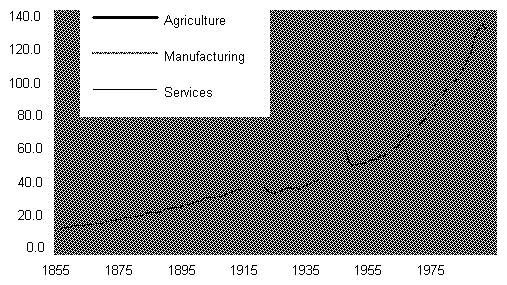
Figure 5: Percentage of UK Workforce employed by agricultural,
manufacturing and service sectors.
All of this does not deny the continued existence of farming, the manufacture of clothing, hard and soft technologies - quite the reverse. All of these activities are required, but our expectation is to make them far more efficient and less intensive in human terms. A net result will be an increased percentage of the population working in an information space that need not be location specific [19].
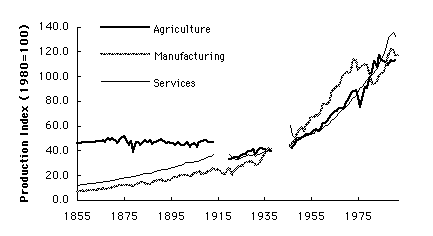
Figure 6: UK Productivity Indices for agricultural,
manufacturing and service sectors.
Information
In Europe there are over 6M photographs of church windows on record, and within five years we may have video on demand (VOD) systems offering a choice from 10,000 videos. The library of congress requires 3.5km of new book shelving every year to accommodate all the new publications. It has also been estimated that the total of mankind's published material - and this is sometimes equated to knowledge itself - doubles every three years. It is also clear that a huge amount of information becomes irrelevant, out of date and represents a largely meaningless clutter.
It is interesting that when addressing a problem the finding and assembly of all the related information represents the major task and the least interesting one. It is the manipulation of the information it's preparation and presentation that require a great deal of human input and perhaps the former can be overcome by artificial intelligence realised as autonomous software agents. It has been estimated that professionals can spend up to 80% of their active time trying to find information, and as little as 5% formatting it and making decisions. These proportions are probably true of students, researchers, and much of the creative population. Apart from serendipity; the chancing upon items that are not of immediate interest, or items filed under an obscure but indirectly related category, the looking for and finding of information is no fun, it is generally frustrating and a waste of time and energy.
What we need are technologies to help us navigate through the growing field of information, find what we want, access and manipulate data so we can get down to the kernel - decision and action! The necessary technologies are all under development with Artificial Intelligence (AI) for navigation and location, plus Hebbian decay [20] mechanisms for filing, and automatic text summarisation [21]. However, there are still significant problems associated with the complexity and size of systems, data bases and connectivity expected by the year 2000. At this juncture much of the display, software, hardware platforms and interfaces will be available to a wide proportion of the population [22].
Publishing - More for Less
In the 15th Century the Vatican library had less than 400 books and it was one of the biggest libraries on the planet. Today most of us own more books as individuals and the library of Congress has an estimated 22 to 24M volumes on 500km of shelves. To access and keep up to date in an information space so vast is clearly impossible. We cannot afford the trees, the paper the energy and, most of all, the sheer inaccessibility. Already we see CD-ROM technology delivering 650Mbytes of information. Such a medium is capable of holding all the classics and most all of the specialist books we could desire in a few tens of discs. Indeed a staggering 2000 classics have recently been published on one CD-ROM. Complete encyclopaedias, art galleries, museums and, perhaps most importantly, with animation and interaction are now possible and will become increasingly available. At the present rate of progress we should each have enough storage capacity at work and home to hold the contents of the Library of Congress within 15 years. But this is not the whole story - we only need access - we do not need copies of everything. The first book store on Internet has opened with 50 volumes selling at 5$ each At this price our purchasing algorithm changes! Buy it and try it - who cares - it is so cheap I can afford to throw it away if I don't like it!
The publishing industry is thus about to undergo a revolution far greater than the move from the scribe to the printing press. We might recall an old Chinese proverb:-
I hear and I forget
I see and I remember
I do and I understand
To date well over 20,000 volumes are already in digital form and will sell at a fraction of their paper predecessors. Some publishing houses are already predicting that they see the end of paper publishing in sight. For technical and reference volumes this is credible. For the rest it might not be - Paper is very user friendly! The extent of this difference is embodied in the riddle: what is the difference between a laptop and a news paper? The answer is: no one takes a lap top into the toilet! For general reading we need liquid crystal paper - high resolution, definition, contrast, flexibility and compact. Then we might see novels and light reading transformed also - but then again there are alternatives such as talking books!
A further small advance could see custom information on line. Instead of buying a complete newspaper, magazines, books and databases, to discard large sections that are of no interest to us, we may have the option to pay more for less. The focused news, articles, detail, data and information would be far more beneficial. Barring serendipity that is! The future retailing, supply, updating, validation, security, charging, copyright, and format of publications thus pose some major challenges.
Technology - Positive Feedback
Why is all of this so exciting and why does it offer such tremendous potential? Twenty years ago the measurement of the amplitude and phase characteristics of an electronic amplifier took a whole morning. Today the same measurements take less then 15 seconds with an automated network analyser. Similarly, the original lathe was made from wood and was extremely crude being powered by a man or a boy. Soon it was possible to make an even better lathe using the original to produce components to a better accuracy. At some point the wooden lathe reached its height of perfection and it was necessary to use metal to realise further improvement. To this day the lathe story continues. Granted the improvements are now incrementally smaller, but it is now possible to manufacture new forms of machines. The same is true across the broad front of technology - and positive feedback continues to power the IT industry!
From a work perspective it means that a complete PhD study that took over 3 years to complete just 10 years ago, can now be completed in less than 3 months! In short, far more work can now be completed by far fewer people. Or more positively, the human race can achieve far more in a shorter time. The standard working lifetime of the previous generation was about 100,000 hours. We can now achieve their output in less than 10,000 hours or more impressively do 10x the work and get 10x the results! The next generation looks set to overtake us in a similar manner - provided we can keep pace with the technology.
Telepresence - Infomatics
The developed world's population is getting older and it is highly unlikely that there will be the resources to provide the care that is necessary. In Japan programmes are underway to manufacture robots to take on the task. Other alternatives involve the teleportation of expertise, experience and presence itself. The technologies that allow
surgeons to be positioned inside the human body through an endoscope or through the use of a surrogate head peering into an incision are already with us. The prospect of remote diagnosis, inspection and surgery is real and initial experiments are underway. Before long we will see surgeons in California performing operations in London [23]. Robots are already being used in hip replacement, brain and eye surgery. The trip to a doctor's surgery or the hospital outpatient's department could soon become an automated and remote activity. Further developments include the remote monitoring of patients through electronic interfaces mounted on the body. For the diabetic, drug and medicine dependent people it is already possible for them to be monitored at a distance by remote computers that can administer and optimise dosage. So far experiments have been confined to hospital wards, but there is no reason why this cannot be realised globally [24].
All of these concepts can be extended to other disciplines including the repair and maintenance of oil rigs, electronic and power installations and even activities in the home. Being able to call experts, teleport them to your location, and then have them guide you through the necessary steps to affect a solution is only a short step away - and is already being tested.
Remote Education
We might also anticipate that the very process of education will have to change. The vast majority of universities are small, with small departments increasingly stretched by a widening curriculum. Staff have to cope with larger numbers of students and teach a wider range of courses in a shorter time. Why then do we have fifteen lectures giving the same lecture on different days to different groups of students? It is possible for all the students to attend any one of the lectures, or indeed, for the one lecture course to be prepared and delivered by a small team at one university. This would allow specialism by the departments, an increased efficiency and depth of understanding, a real opportunity to conduct meaningful research and perhaps most valuable of all an ability to allow students to mix and match modules and create their own degrees at a distance [25]. The distributed degree among five or six key universities would then be a real possibility!
The nature of teaching and education can also be expected to see radical change. Since the ancient Greeks we have hardly strayed from scratching in the sand. Moving to the blackboard, to the white board and overhead projector is hardly revolutionary given the technology at our disposal. Might we expect experiments on the screen to become as respectable as experiments in the laboratory? After all, they are actually far more powerful and instructive! On-line tutorials, lectures and interactive teaching packages for the rapidly expanding science and technology based curriculum would seem a necessity. Packages are already being introduced in medicine and other professions. The dismantling of high tech structures; simulation of air flow across an aircraft wing; current flow in an electronic circuit; or the dissection of a frog or human organ are already available on trial systems. In many European universities it is becoming impossible to get a degree qualification without your own personal computer.
Perhaps in the not to distant future we will be able to cruise the world's institutions, virtual or real, and drop in for a refresher course presented by an internationally recognised expert - anywhere, anytime! Perhaps project reports and theses will become active, and interactive documents and high quality visualisation will offer immediately informative representations of physical or other situations, rather than the traditional erudite and oft confusing prose. Most radical of all, mathematics and the physical science may be opened up to all. Those who have found the traditional long haul of a 15 years education, required to get even a rudimentary understanding, to tough, difficult, or plain indigestible, might find that visualisation and/or virtual reality puts them in the picture
Our Children
Already we see our children exhibiting tremendous willingness and ability to move into this new world of information - they do not present the problem - we do! The challenge has to be the rigid mind sets of the over thirties who will have to be weaned off the motor car, physical travel the mass use of paper and dependence on ancient modes of working. In the remaining years of their life these people are likely to see more change for mankind than has been experienced in the previous 100 years. A major challenge therefore will be the finessing of the technology to make it wholly acceptable to the greater part of the population. This will require some adept engineering to create new interfaces that are humanised and present a natural mode of immersion for the vast majority of the human population. If it is to work, the technology has to be available and accessible to all people of all ages. This probably represents the major challenge and is a vital one if we are to succeed.
Limits to Change
All the technology we have briefly considered results in a reduced need to travel, a positive contribution to a greener planet, and a wider choice of experience for all concerned. In the information society the need to travel vast distances from home will be drastically reduced. New forms of short distance transport need to be developed, and perhaps we might even see the demise of the internal combustion engine and its deleterious effects on humanity and the environment. A further outcome is likely to be the restructuring of conurbation's. As fewer people need to travel into cities and increasing numbers of office blocks become vacant there may even be a move to ruralise the environment, remove many of the buildings and return them to there former state. The distributed society working in an information world will create new environments, new cities of the mind, new places to meet and work. Again prototypes are already in the research laboratories and every day new ideas and formats emerge. The rate of change is unlikely to be limited by the evolution rate of the technology, more the inability of mankind and society to subsume these advances and make use of them in a positive and economic way.
The information Wave might just be the ultimate challenge, and opportunity, for humanity - we can opt out, but we cannot escape. We have to rise to the challenge, solve the problems, and access the power of information
About The Author
Peter Cochrane joined the British Post Office in 1962 and is a graduate of Trent Polytechnic and Essex University. He is a fellow of both the IEE and IEEE, a visiting professor to Essex, Kent and Southampton Universities and a visiting fellow to UCNW at Bangor. He joined BT Laboratories in 1973 and has worked on a variety of analogue and digital switching and transmission studies. He has been a consultant to numerous international companies on projects concerned with systems, networks and test equipment development. In 1978 he became manager of the Long Lines Division and directed the development of optical fibre systems, photonic amplifiers and wavelength routed networks for terrestrial and undersea applications. He received the Queen's Awarded for Technology in 1990 for the production of optical receivers for TAT- 8 and the PTAT- 1 undersea cable systems. In 1991 he was appointed to head the Systems Research Division at BTL which is concerned with future advanced computing and communications developments. He was further promoted in 1993 to head the Core Technologies Research Department with 620 staff.
References
1 Eric K Drexler. Engines of Creation. Oxford University Press. 1992.
2 D H Meadows et al. (1972) The Limits to Growth: A Report for the Club of Rome's Project on the Predicament of Mankind. New York.
3 P Kennedy (1993) Preparing for the Twenty First Century. Harper Collins, London.
4 B Cartledge. Energy and Environment.. Oxford University Press. 1993.
5 B Anderson. (1977) Solar Energy: Fundamentals In Building Design. McGraw-Hill.
6 1993. Social Trends 23, CSO, London.
7 1993. Annual Abstract of Statistics 1993, CSO, London.
8 Ed. R L Gregory. The Oxford Companion To The Mind. Oxford Press.
9 H W Hadenburgh. CPU Performances: Where are we headed?. Dr. Dobbs Journal, Jan. 94 Vol. 19.
10 I Pearson. When I'm 64. BT Internal Paper. May 1992. To be published in BTEJ 1994.
11 P Cochrane, D J T Heatley, P J Smyth and I D Pearson: "Optical Telecommunications - Future Prospects". IEE Electronics & Communication Engineering Journal, August 1993, Vol.5, No.4, pp.221-232.
12 P Cochrane and D J T Heatley: Modelling Change in Telecommunications. Special Issue of British Telecom Technology Journal, April 1994, Vol.12, No.2.
13 N P Negroponte. Products and Services for Computer Networks. Scientific American, September 1991 Vol. 265 No. 3.
14 A W Branscomb. Common Law for the Electronic Frontier. Scientific American, September 1991 Vol. 265 No. 3.
15 H D Crane & D Rtischev. Pen and Voice Unite. Byte. October 1993.
16 M H Lyons, P Cochrane, K Fisher (1993) Teleworking in the 21st Century. Computing & Control Engineering Journal, Aug. 93 p. 170.
17 K Cameron. CamNet the first telepresence system. Interlink 2000, August 92.
18 1993. Annual Abstract of Statistics 1993, CSO, London.
19 M H Lyons, M Gell, P Cochrane (1993) Companies and Communications in the Next Century. Proc. of Telecom '93. Canadian Business Telecoms Alliance (CBTA), Toronto.
20 P Russell (1980) The Brain Book. Routledge.
21 K R Preston & S H Williams. Managing the Information Overload. Physics in Business - Newsletter of the IOP. July 1994
22 P Cochrane, K Fisher, R Taylor-Hendry (1993) The Office You Wish You Had. British Telecommunications Engineering. July 93 Vol. 12 Part 2.
23 J McCrone. Computer chaos at medicine's cutting edge. New Scientist 25/9/93.
24 P Cochrane P and M Hobsley (1993) Visions of a Perfect Diagnosis. The Times Higher Education Supplement, 19 Nov 93, p8.
25 P Cochrane. Education, technology and change - a personal view. IEE Computing & Control Engineering Journal. Vol5, No2, April 94.